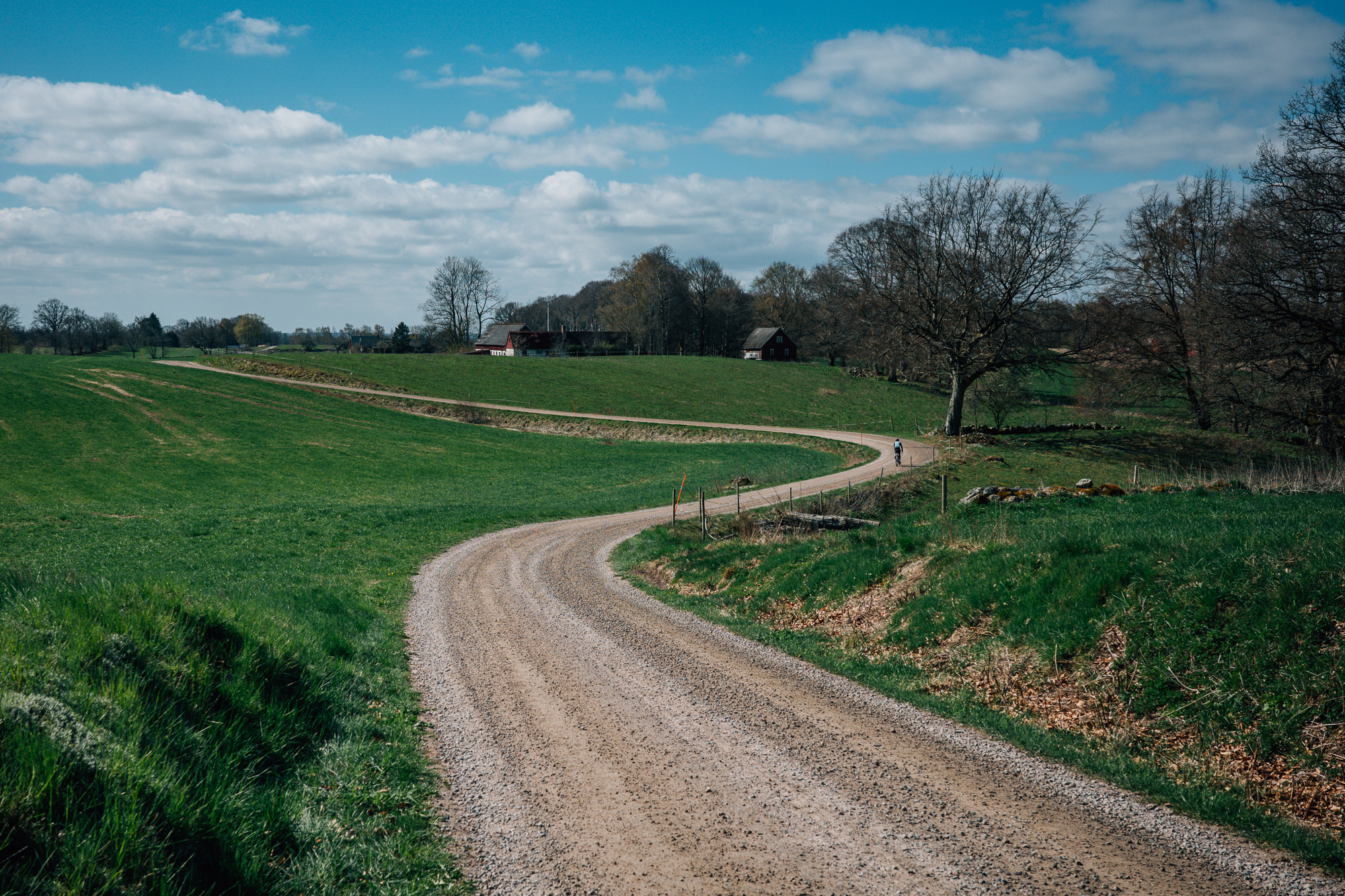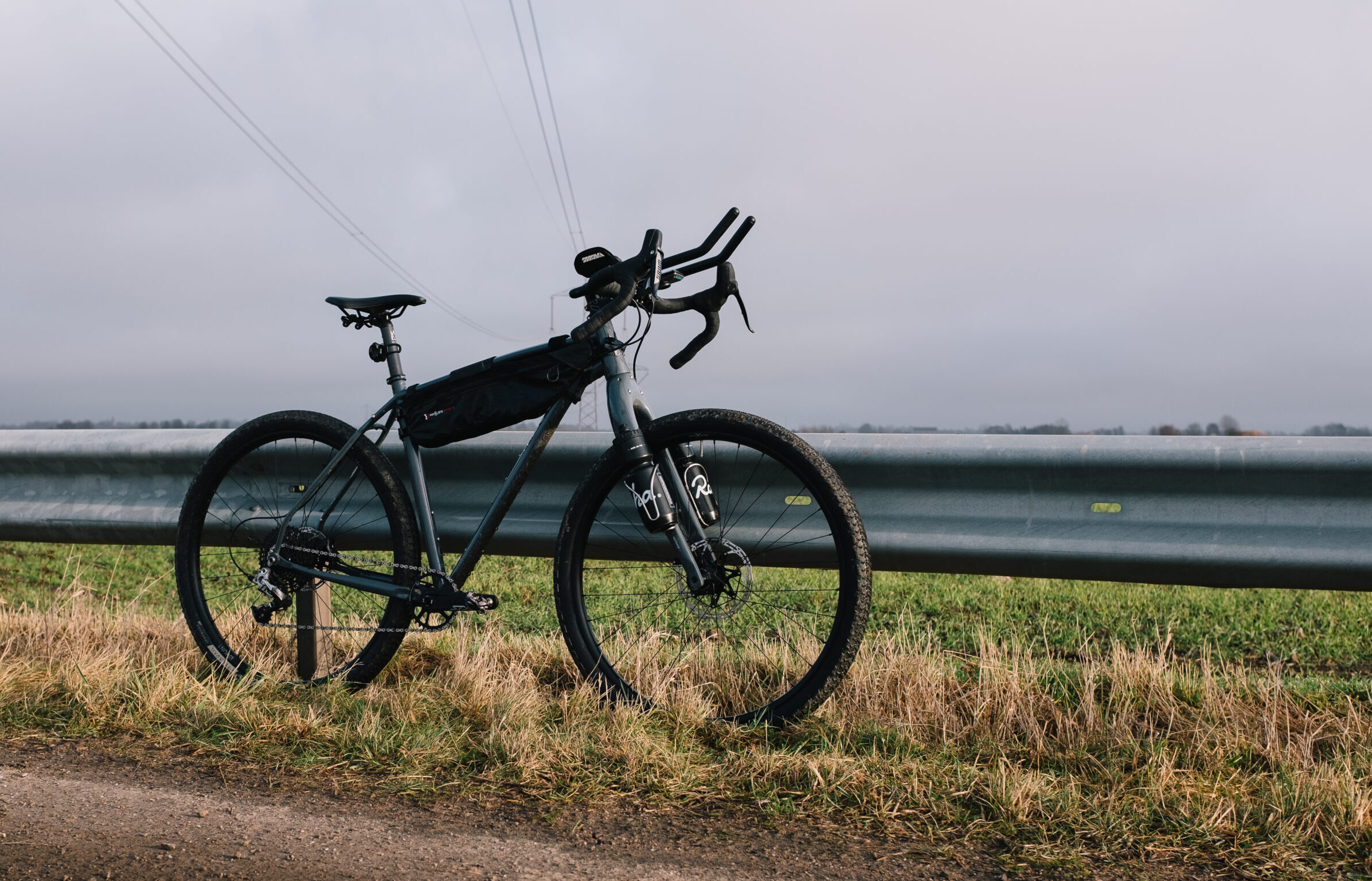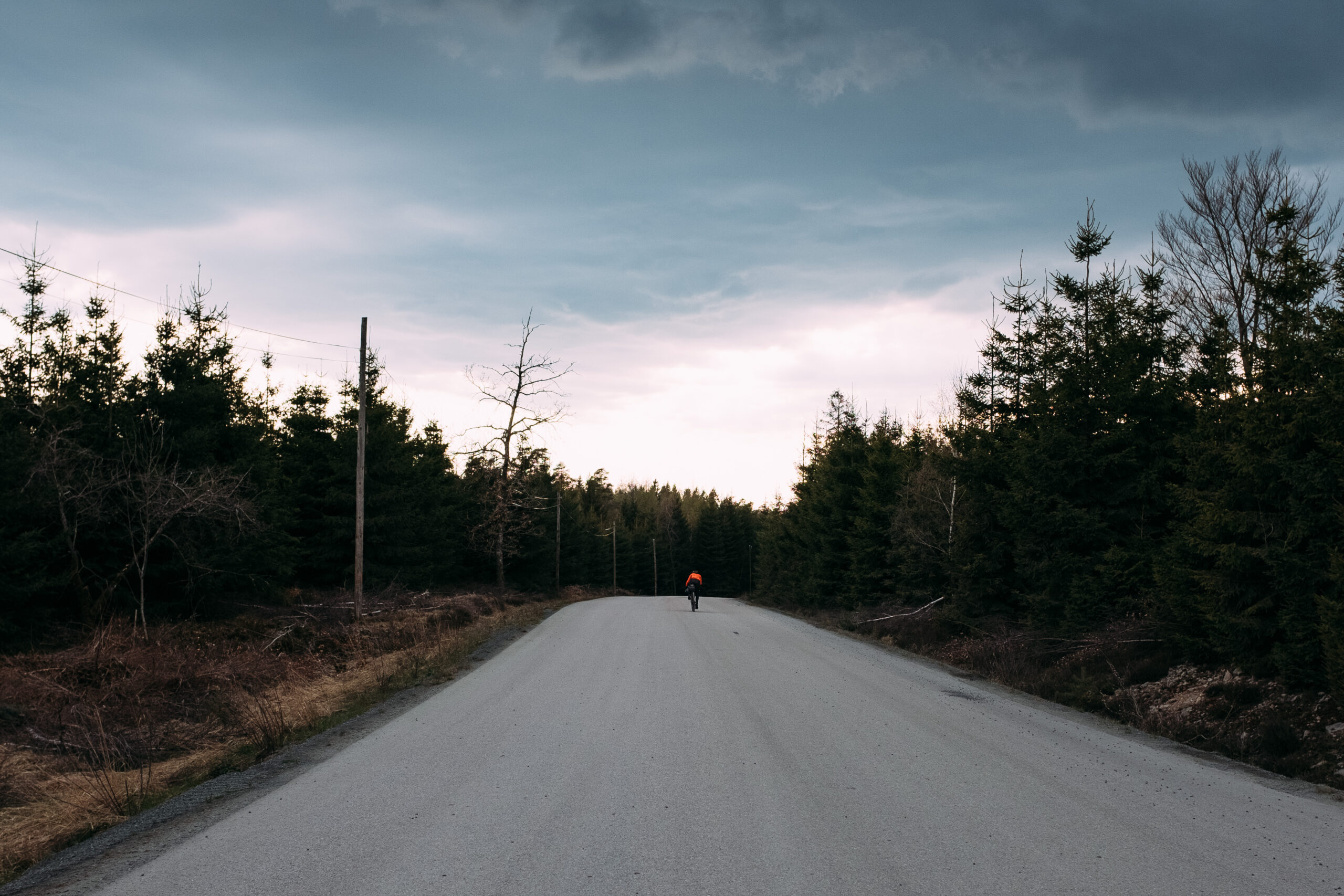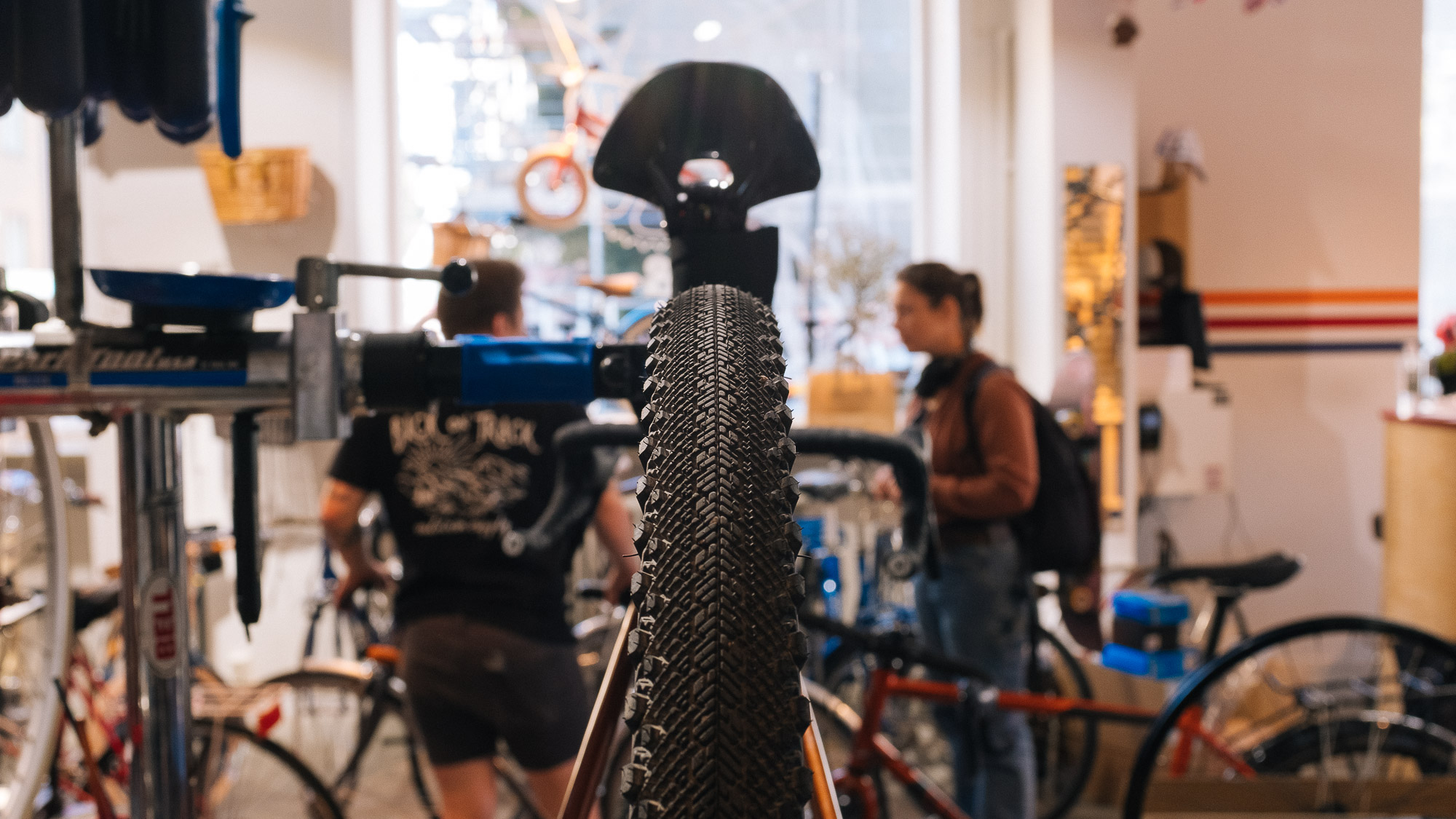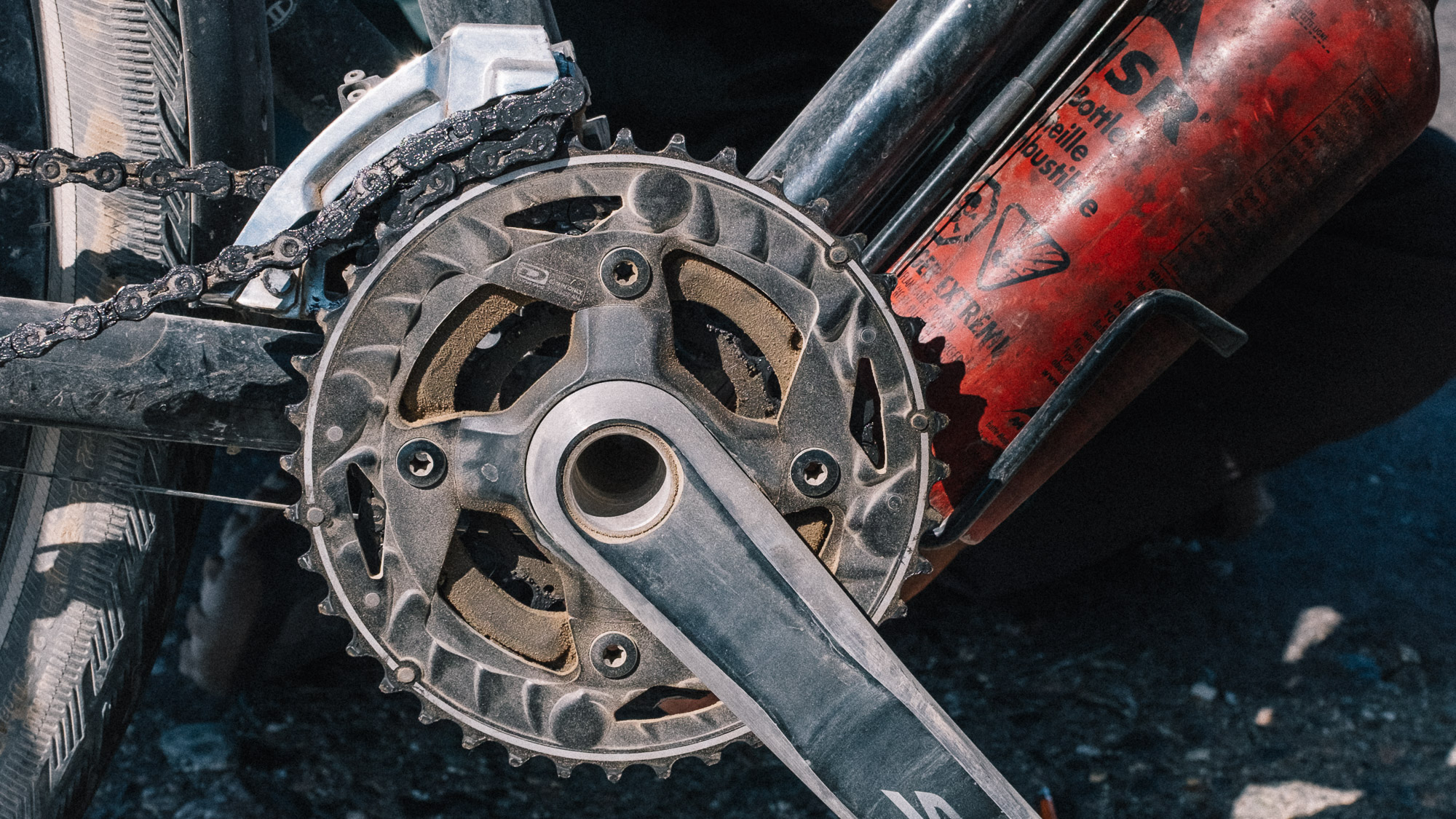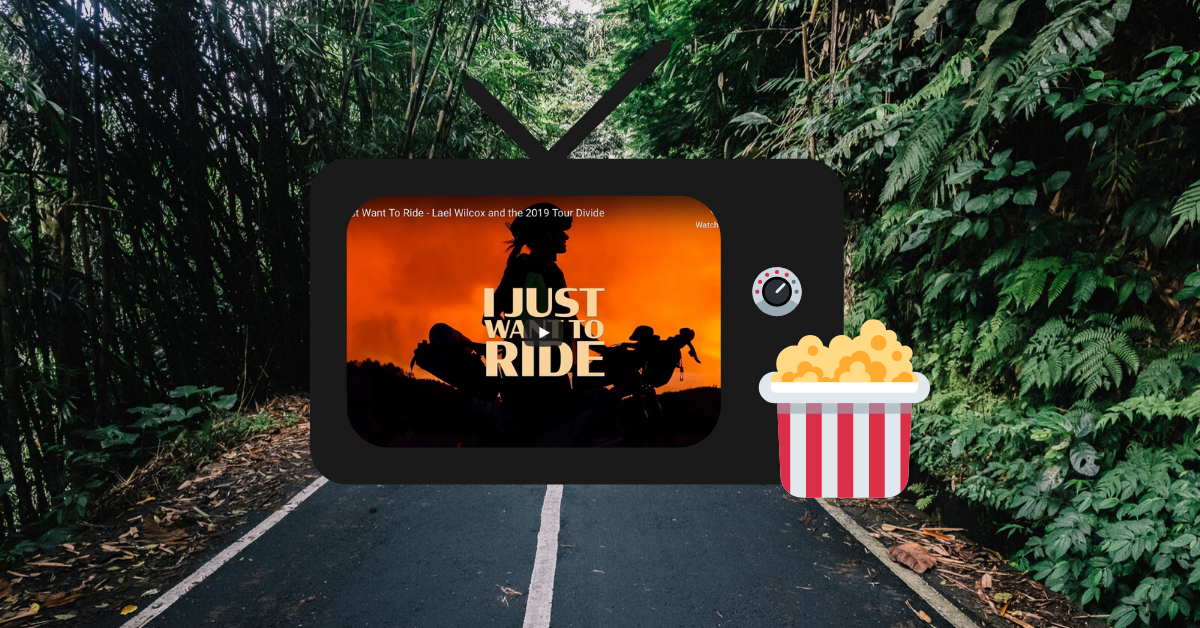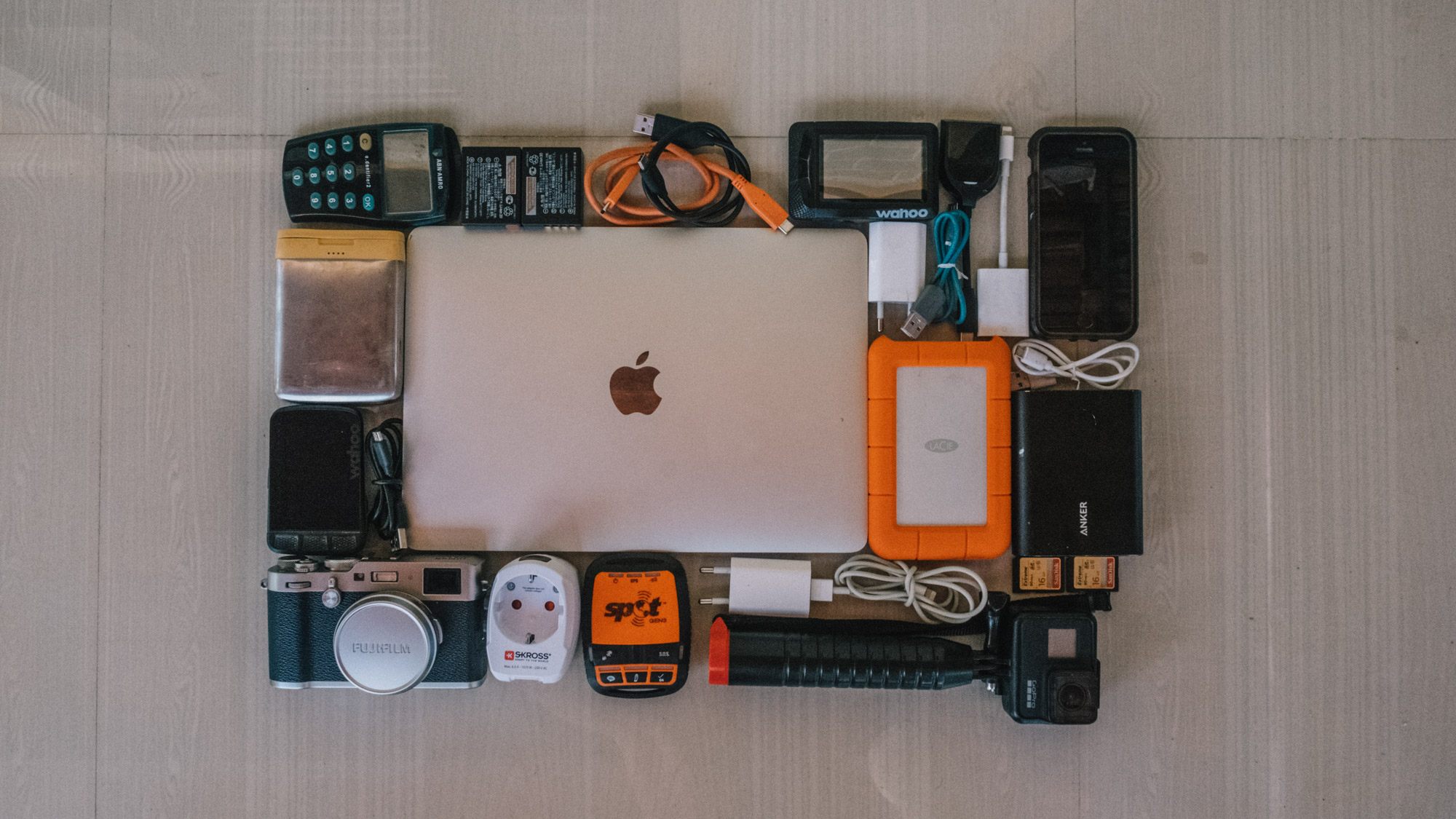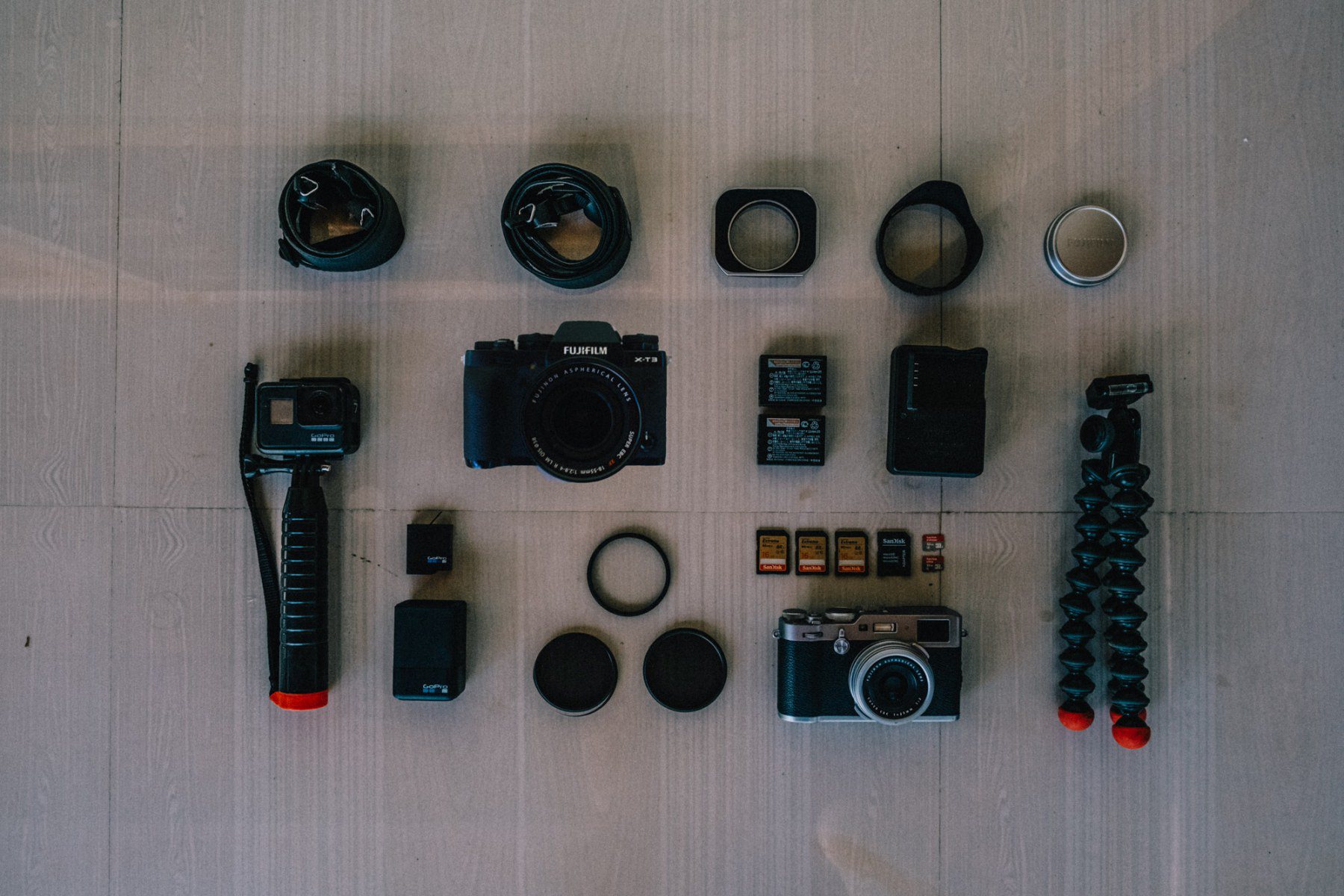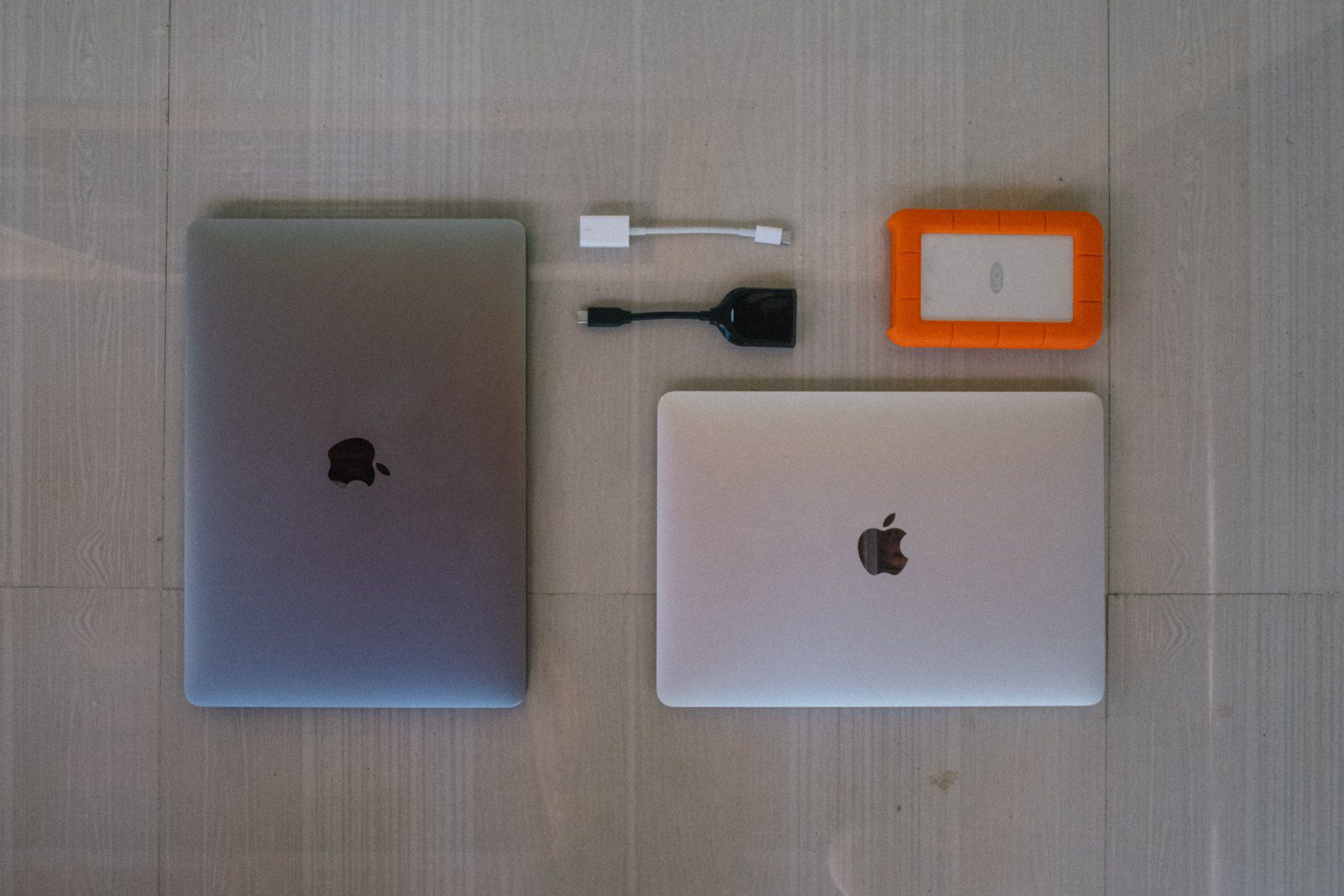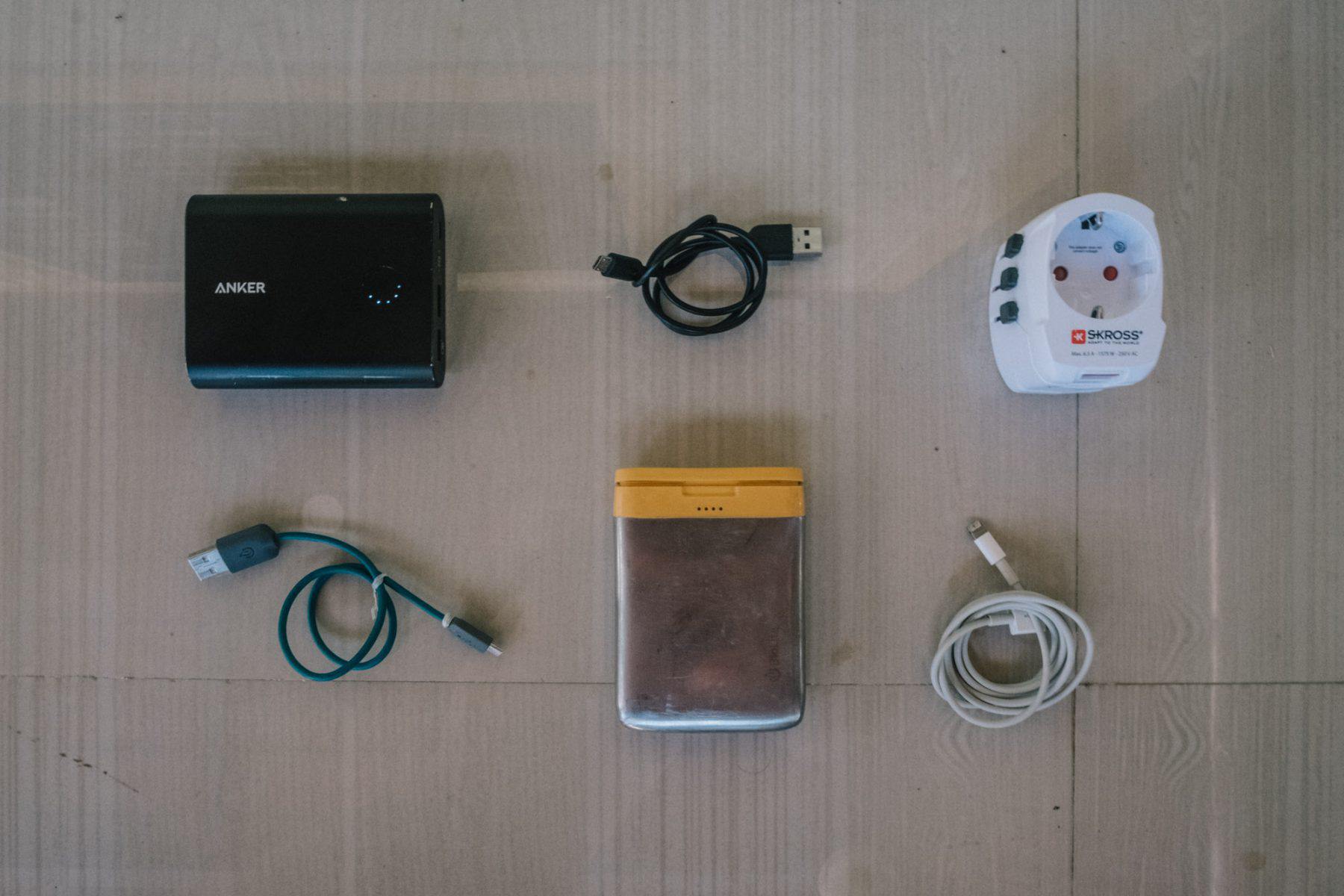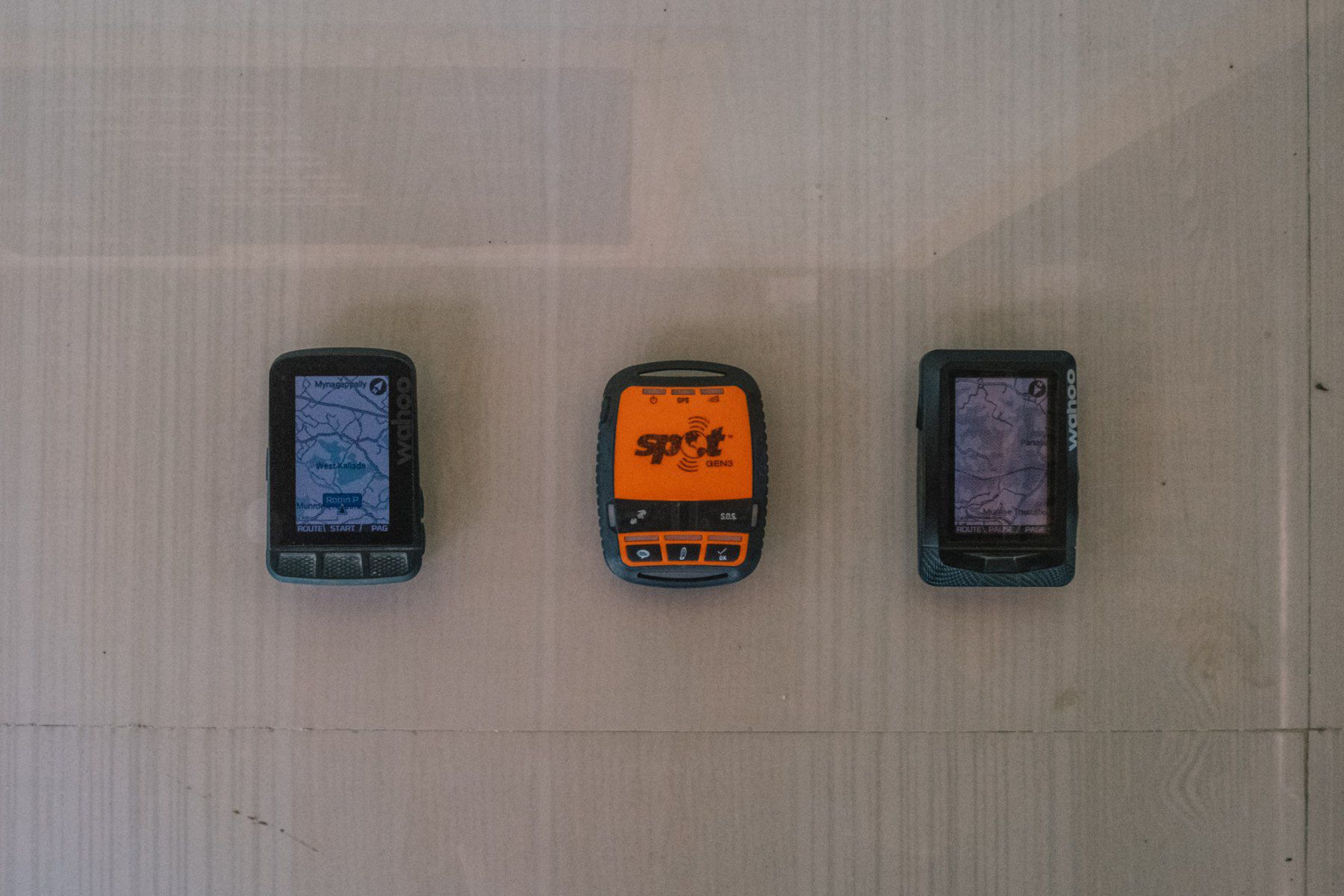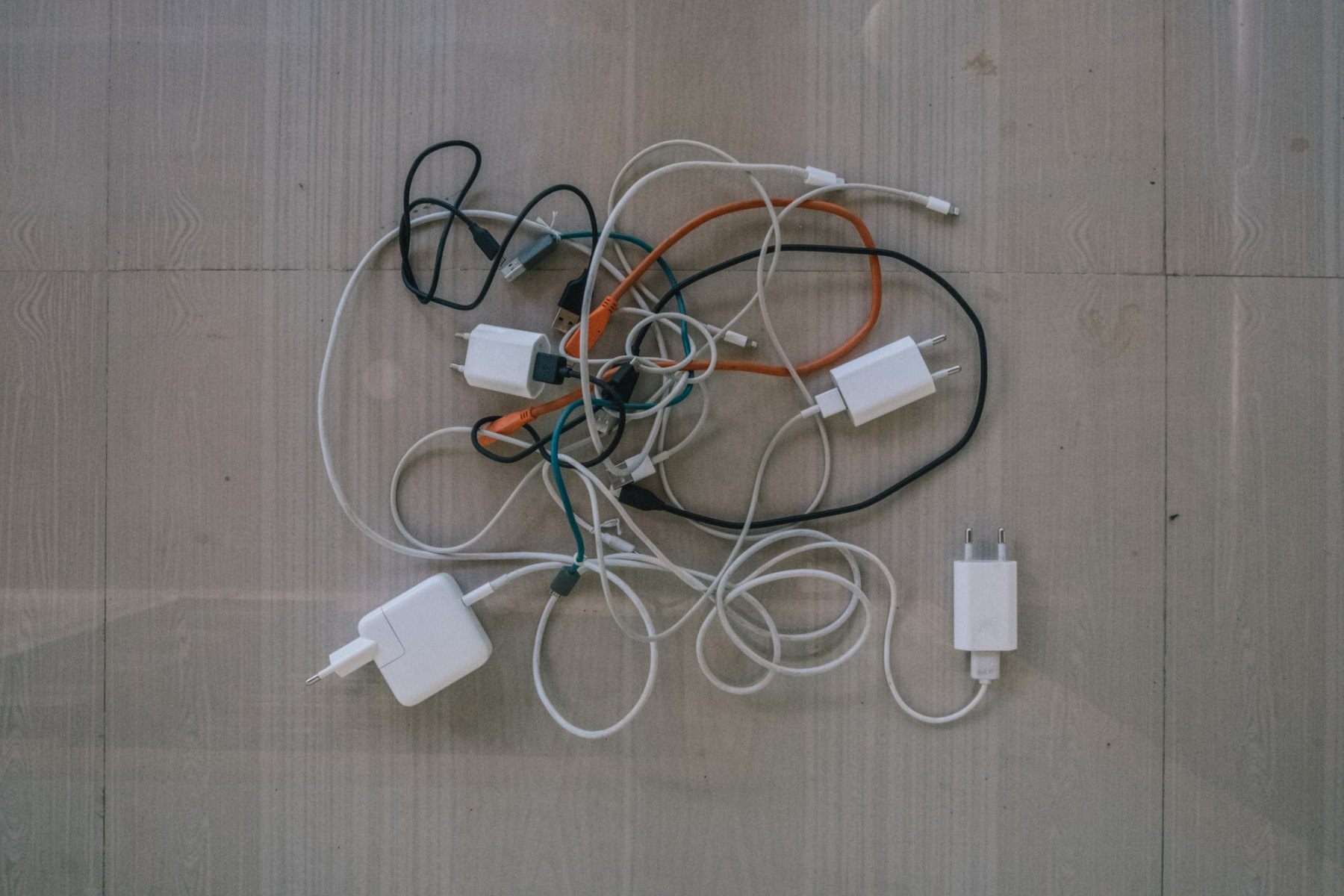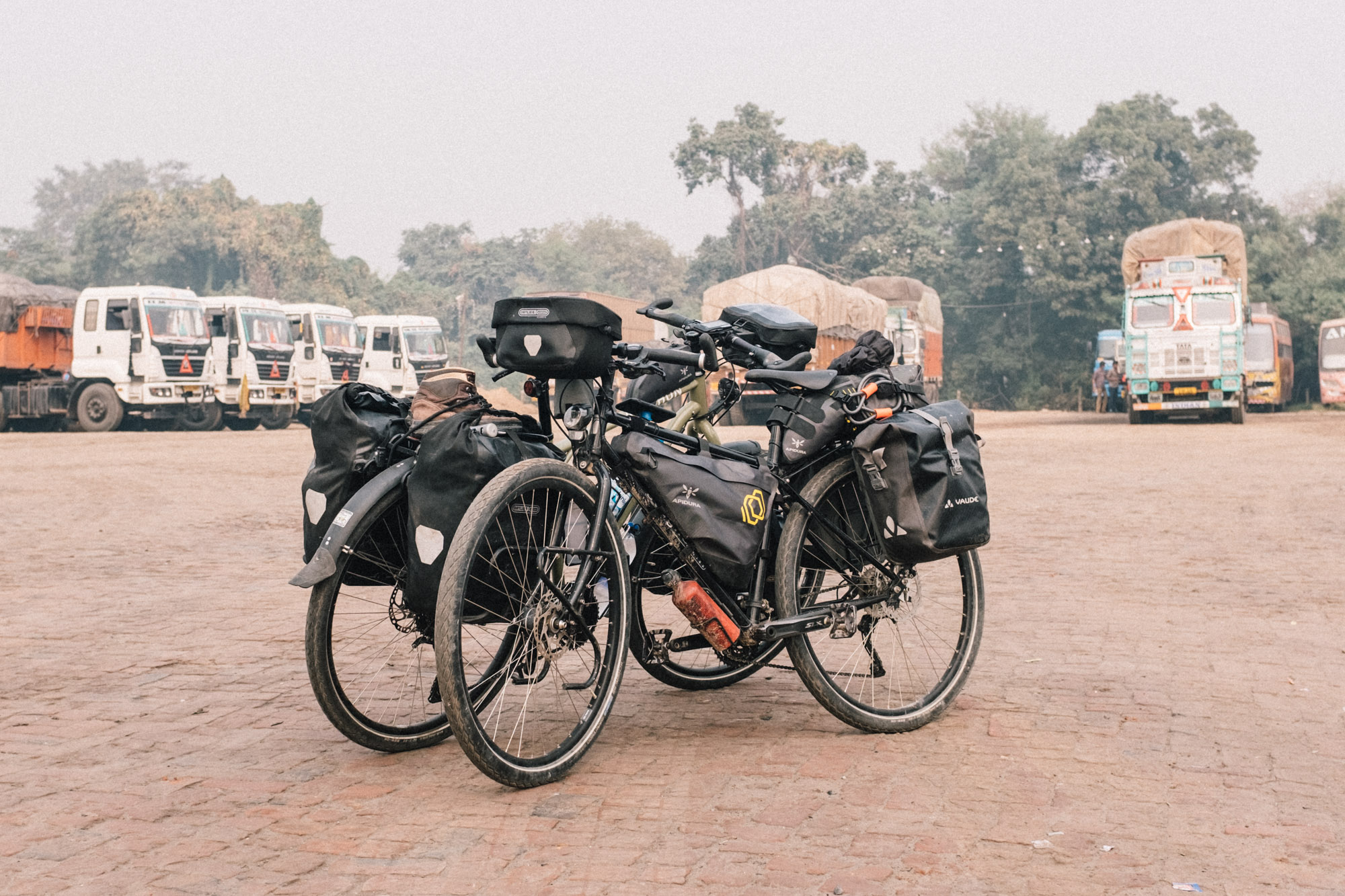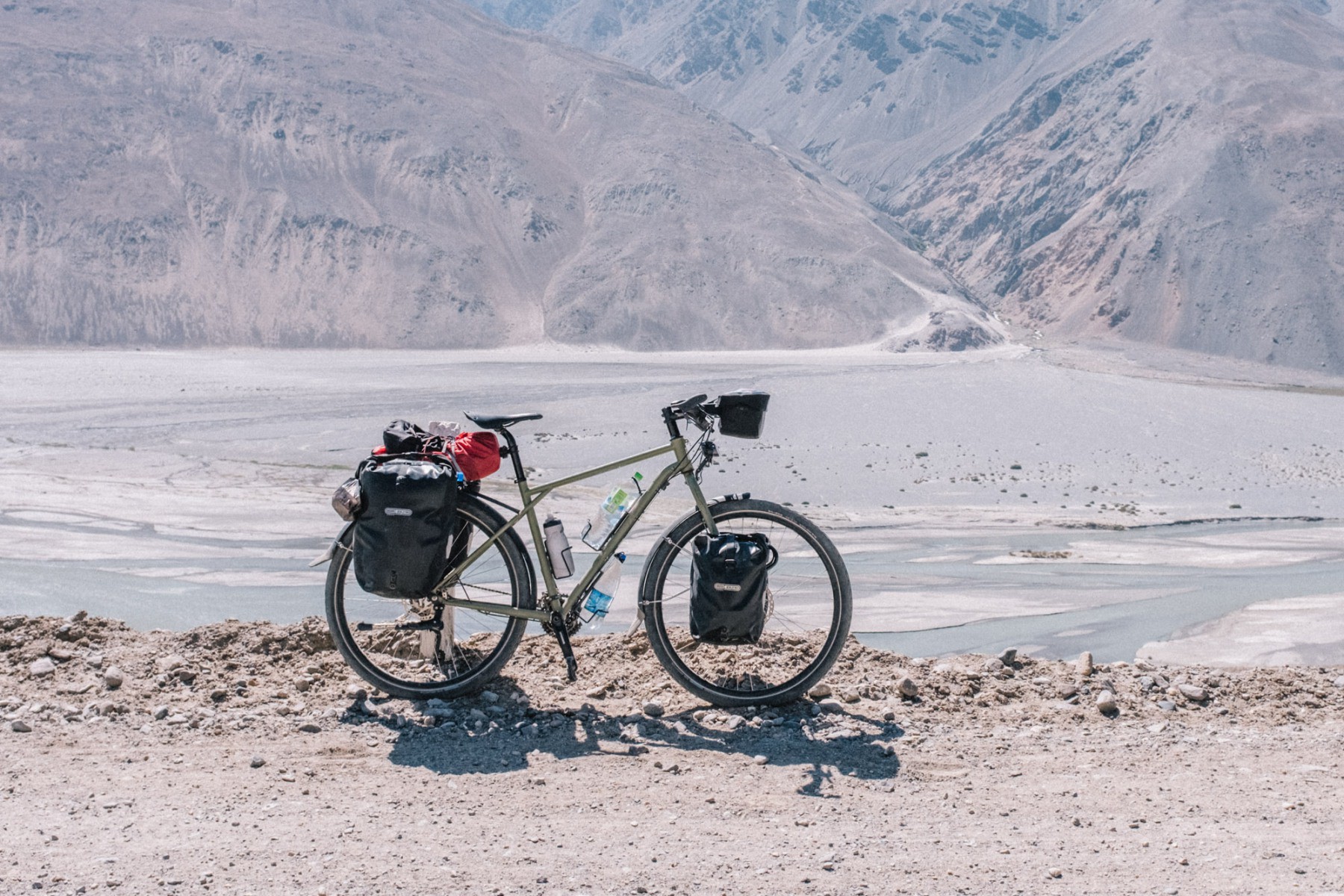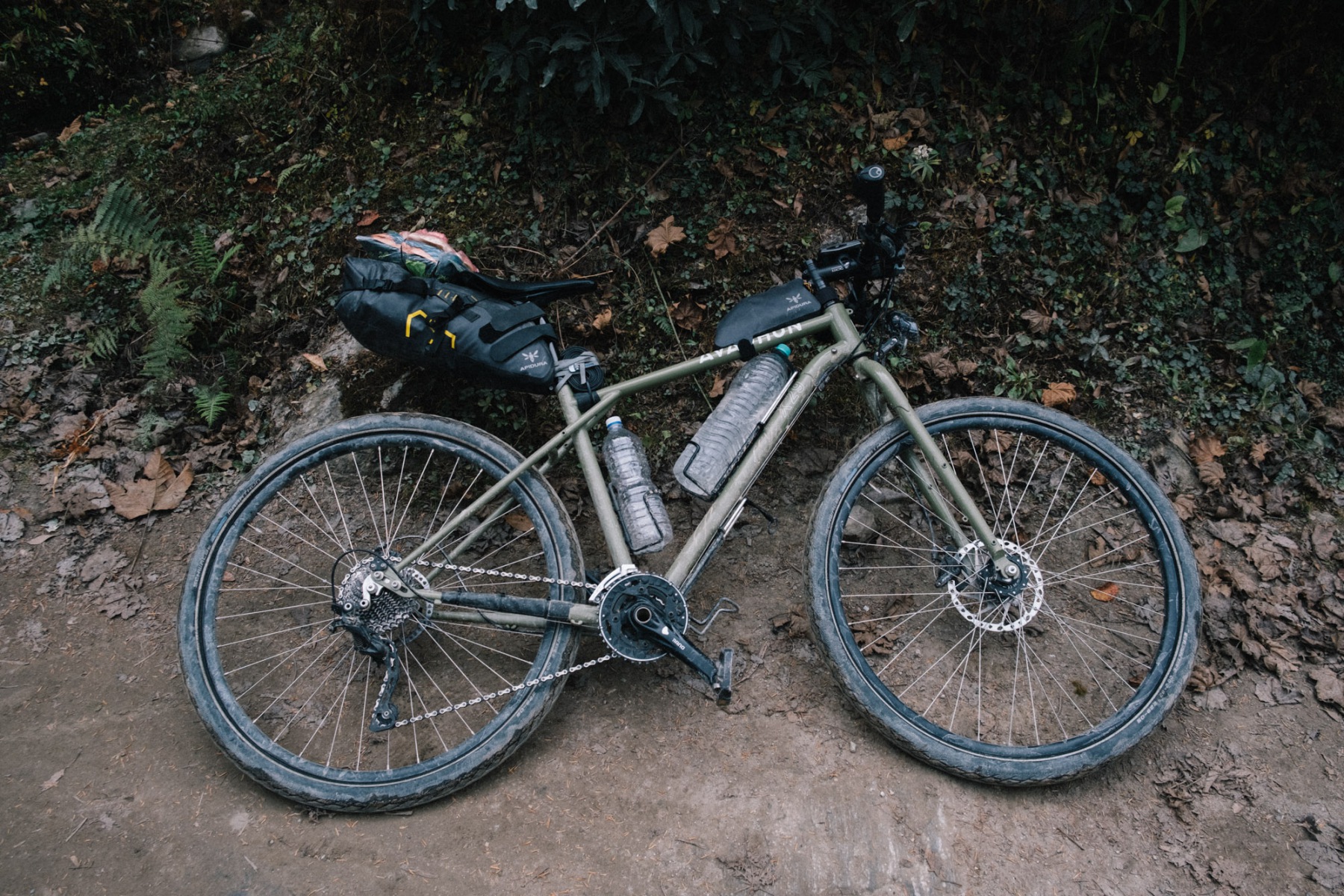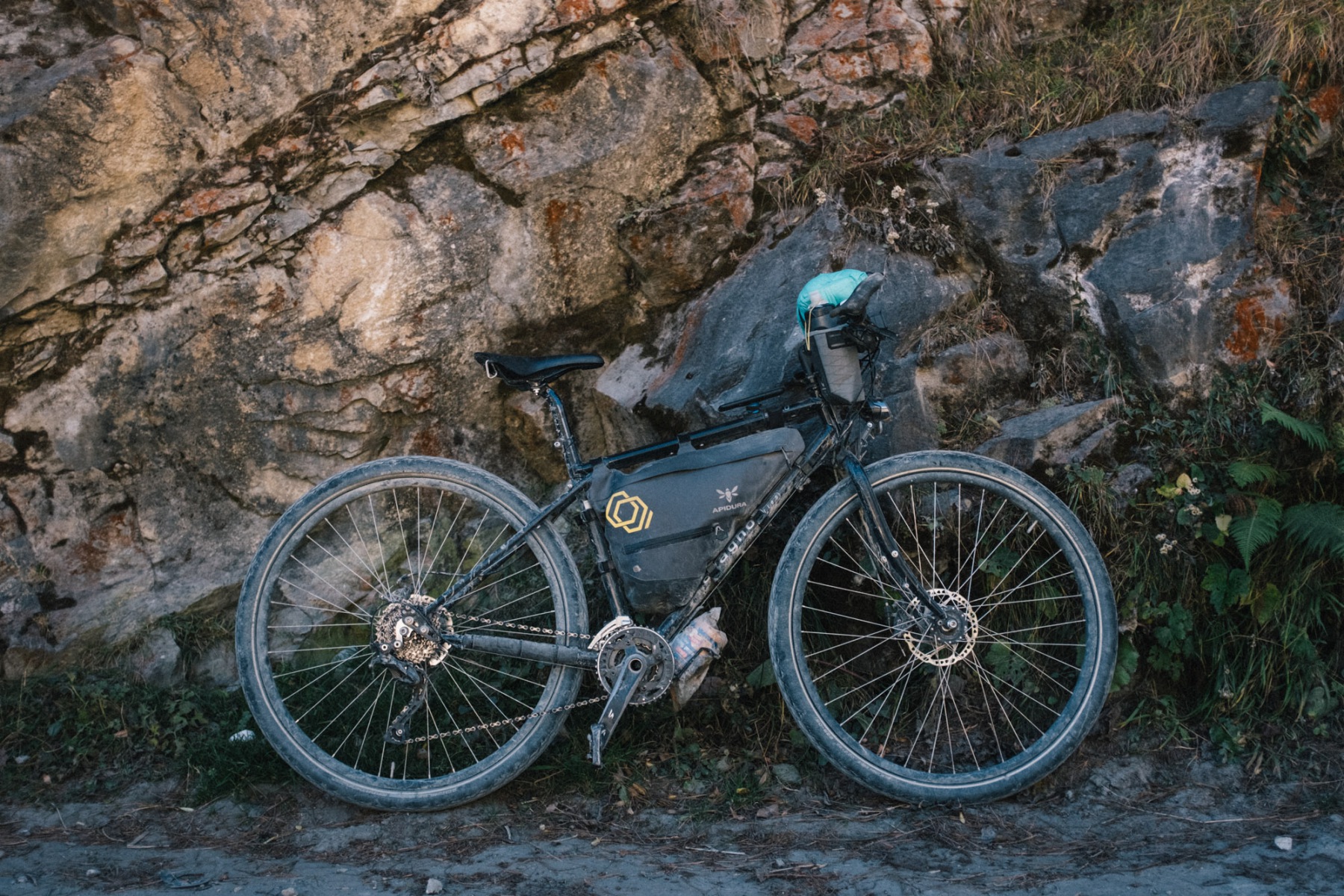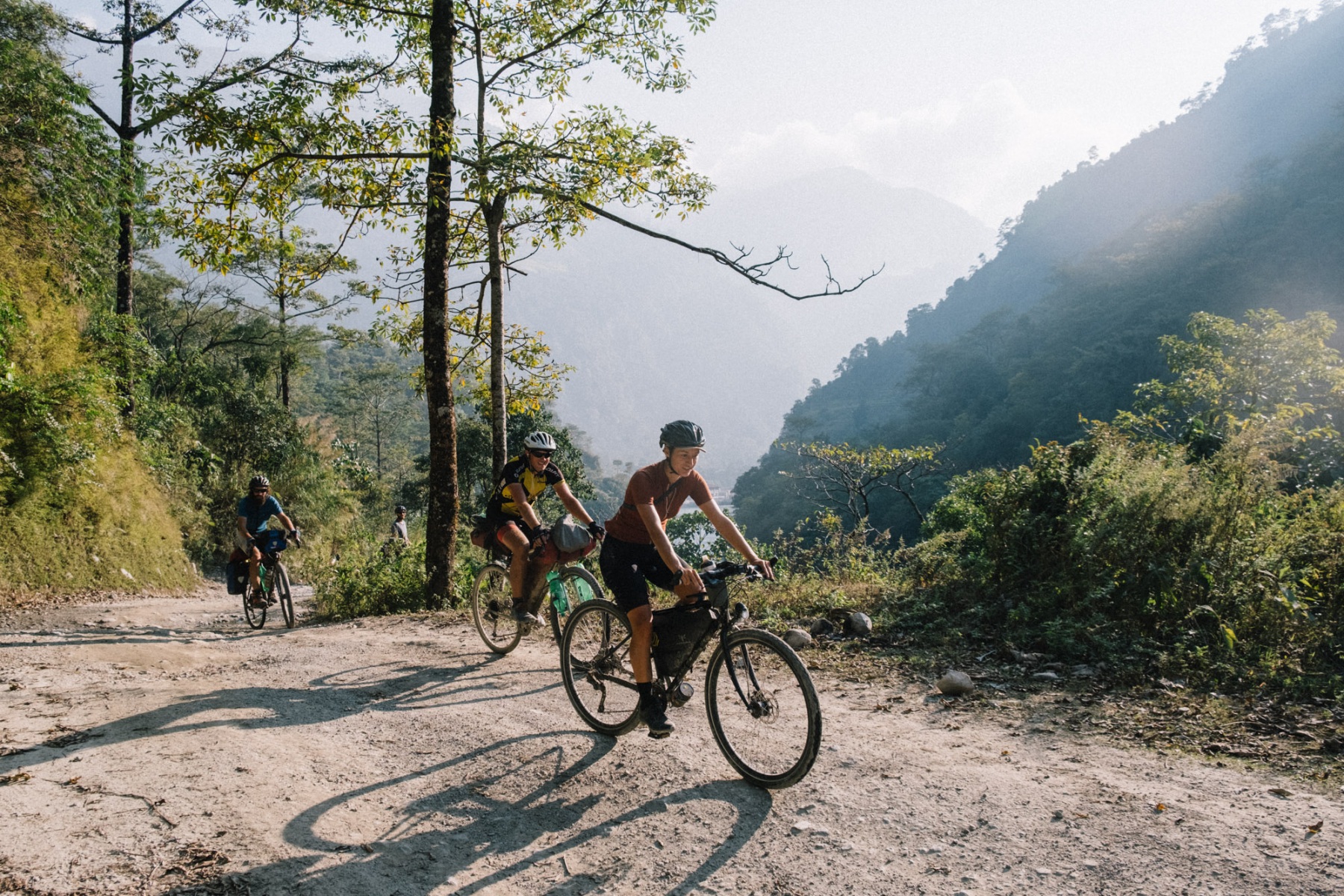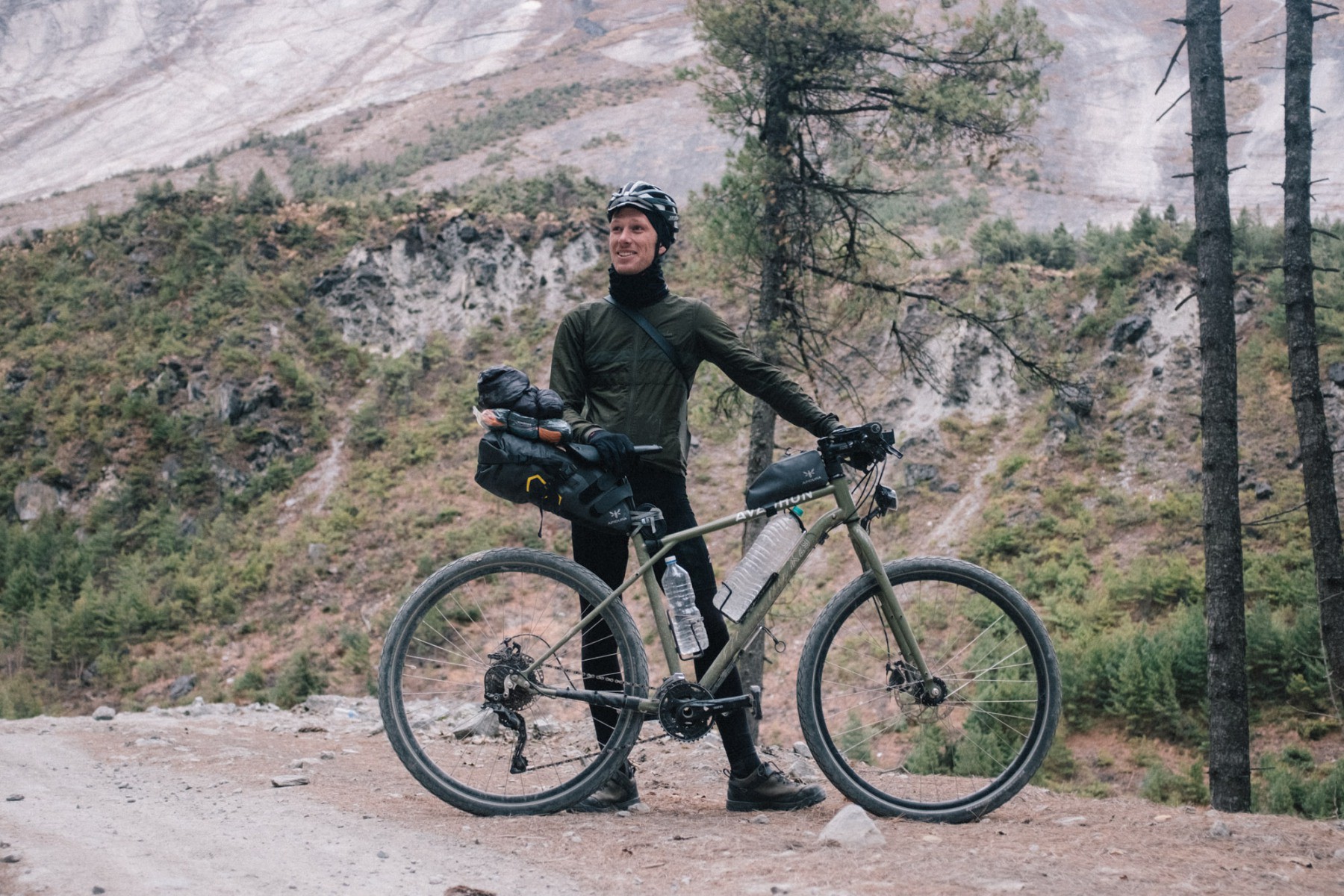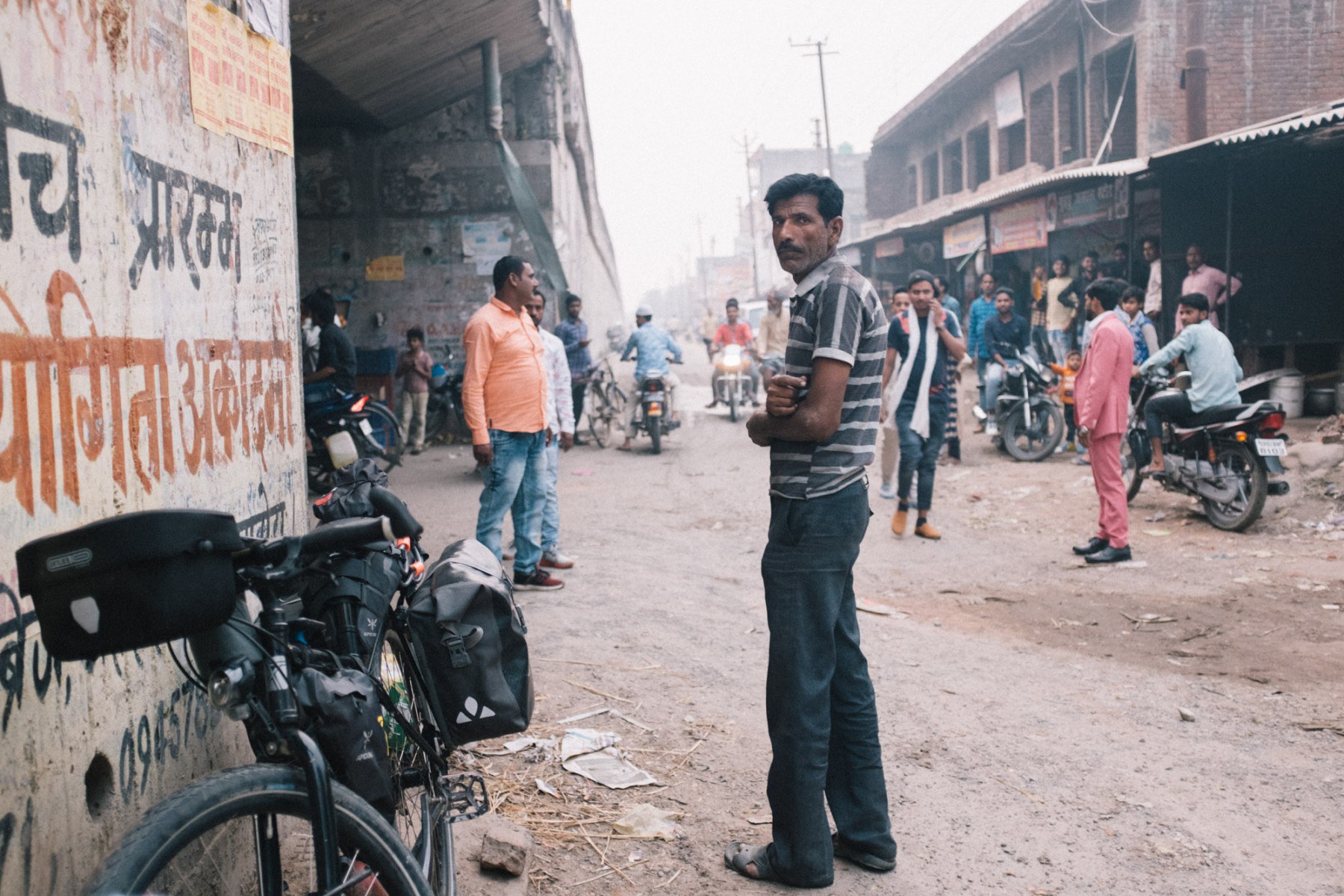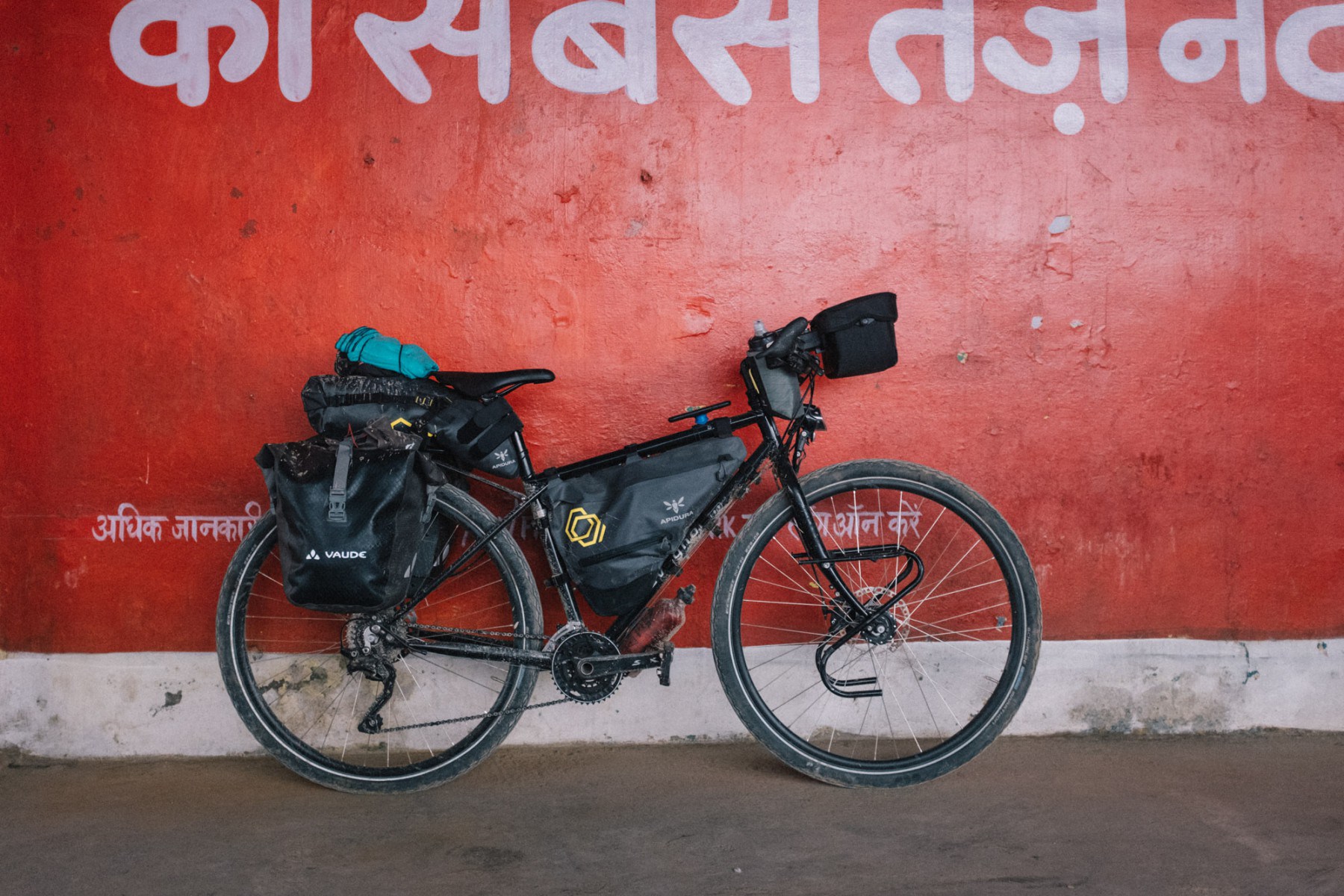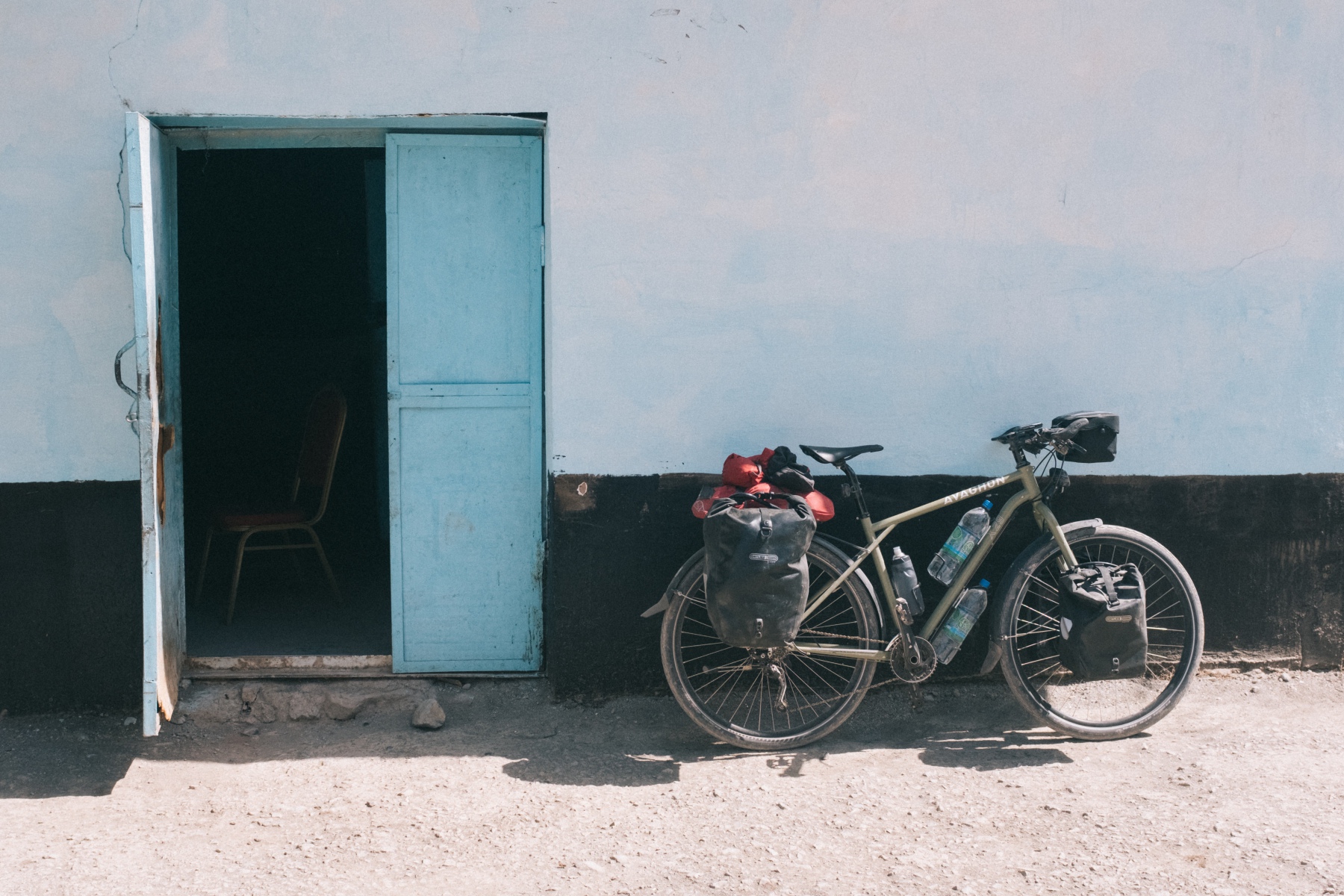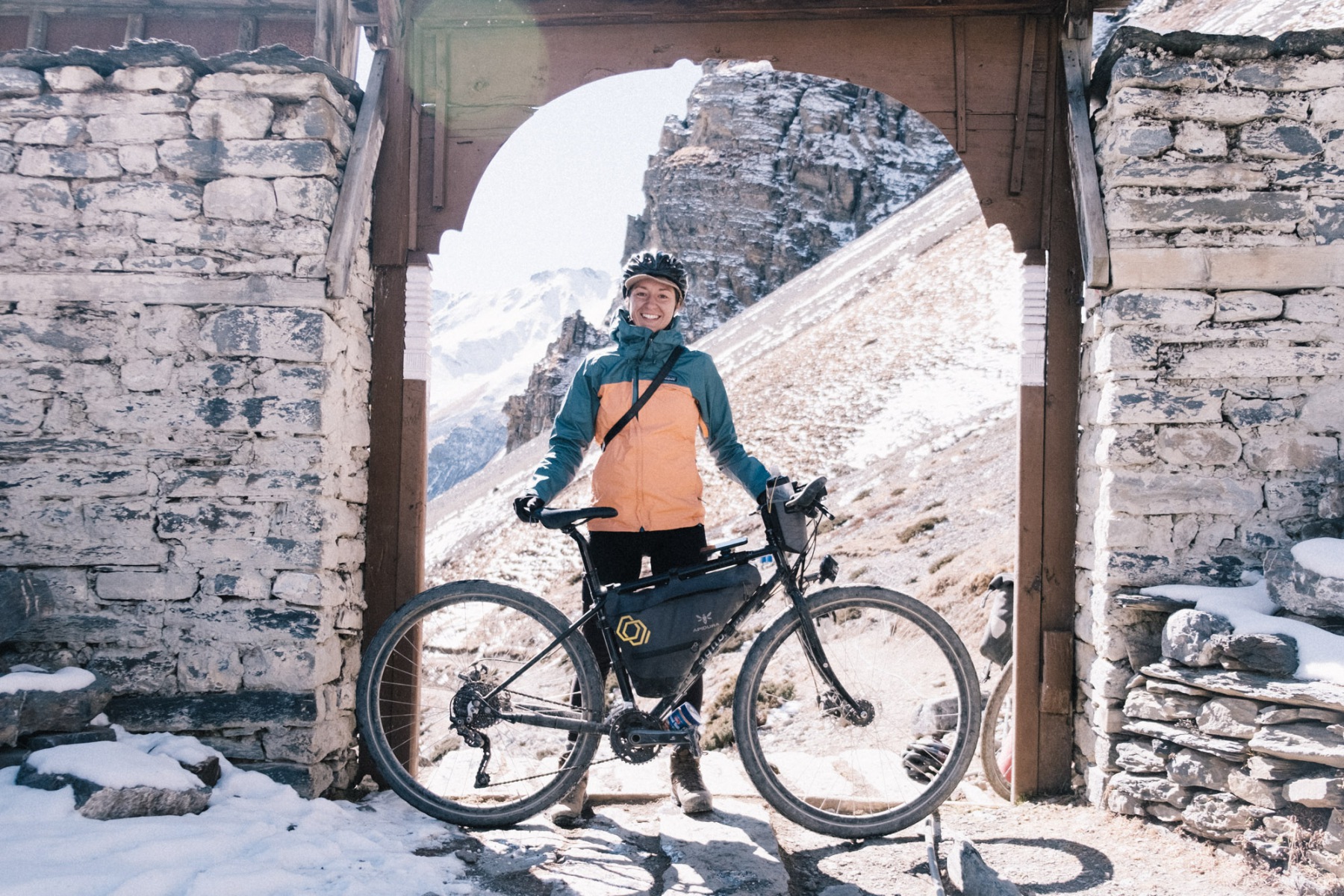Every trip we take our bikepacking set-up gets lighter, and we manage to slim down our lightweight bikepacking set-up. After experiencing how hard it was to push a heavily loaded touring bike through mountainous terrain, we turned saving grams into an art form. Here is what we brought for a three-day bikepacking trip.
When the temperatures here in Sweden finally rose above double-digit numbers, we packed our gravelbikes for a three-day bikepacking overnighter in central Skåne. It was our first time riding the 3T Exploro gravelbikes with bikepacking bags strapped to them, and we were pleasantly surprised that the handling wasn’t that affected by the extra weight. Just the turns felt a tiny bit slower. Of course we packed them much lighter than we did for our year-long endeavour. The carbon frames also offer way less space for mounting than our heavy-duty steel touring bikes.
Bikepacking bags on a gravelbike
Robin used the following bags:
– Revelate Designs Sweetroll Handlebar bag
– Egress Pocket Handlebar bag
– 2 Revelate Designs Mountain Feedbags
– Revelate Designs Mag-Tank Top tupe bag
– Apidura Backcountry Saddle bag
Sabina’s set-up looked like this:
– Apidura Backcountry Handlebar bag
– Apidura Backcountry Food pouch
– Apidura Expedition Top tube bag
– Ortlieb Roll-top Frame-Pack
– Apidura Expedition Saddle bag
Bikepacking sleeping set-up
We are still using the same sleep system as on our previous adventures. Warm, comfortable and durable. The Sea to Summit sleeping bags, pads and pillows are not the lightest, but they have been keeping us warm and comfy while being under heavy use for two years already.
It is also not the weight that matters the most when it comes to a lightweight bikepacking set-up. It’s the volume of the gear that you want to be as small as possible. This is definitely something that we want to improve on our kit list. The pad and the bag are still quite bulky. We both carried our sleeping gear in the handlebar bag and strapped to the handlebar.
Since we could sleep in wind shelters, we didn’t bring a tent. That saved us a lot of packing volume and a bit of weight. We carried our silk liners, but with nighttime temperatures just below zero, it would have been better to use fleece liners. Just to take the chill off.
Our sleeping kit:
– MSR Universal Footprint
– Sea to Summit Comfort Plus Insulated sleeping pad
– Sea to Summit Spark III sleeping bag (Robin)
– Sea to Summit Flame III sleeping bag (Sabina)
– Sea to Summit Aeros Pillow Down Regular
– Sea to Summit 100% Premium Silk liner
Cooking system for bikepacking
After the fuel line in the MSR Whisperlite stove clogging up again, we have been trying out a few different cooking systems. Our favourite thus far is the Optimus Crux Weekend cook system. The lightweight set contains two pots, a super small, yet powerful stove and a gas canister. We even had room left inside the set to store matches and a small towel. Robin carried the set in a cargo cage, mounted to the down tube. Sabina forgot her spork in the Netherlands, so she just brought a fork from our kitchen drawer. We also had a Swiss army knife and Robin had his spork.
Water on a bikepacking trip
On this trip we regularly passed small towns with supermarkets, so we didn’t need to carry that much food and water. Perfect for a lightweight bikepacking set-up. Robin had two water bottles, and Sabina had one bottle and a 2l water bladder. Because Robin rode without a frame bag, he could fit one bottle in his frame. The other bottle he carried in one of the cockpit bags. Sabina kept her bottle in her food pouch and the bladder in her frame bag.
Food for bikepacking
Always make sure to reserve extra space for food. You’ll be surprised how much you eat during long days in the saddle. Food takes up a lot of space and is often relatively heavy. We carried our food in Sabina’s frame bag and Robin’s saddle bag. Snacks we keep ready to eat in the cockpit bags, so that refuelling is easy. That way we can keep the flow of incoming calories as easy as possible.
For dinner, we ate out one night (because the supermarket was closed), and we had the Trek’n Eat freeze-dried meals the other night. Especially the Couscous with chicken was very tasty.
Everything together, this was probably the lightest kitchen we ever had:
– Optimus Crux Weekend cook system
– Swiss army knife
– Small towel
– Spork, fork and Swiss armyknife
– 3 water bottles
– 2 litre bladder
– Trek’n Eat meals
– Oatmeal
– Snacks and meals we bought along the way
Tools in a lightweight bikepacking set-up
A toolkit can really make or break an adventure. The bare essentials of a kit are a multi tool, chain breaker and something to fix punctures. Now that we’ve both switched to riding tubeless, we also carry a plug just in case the sealant won’t do the job. And if that would also fail, we carry spare inner tubes as well. Better safe than sorry – you don’t want to end up walking to the nearest bus station. Other than that we only brought missing links and a spare tubeless valve, that Robin actually ended up needing.
Our entire lightweight tool kit (except for the tubes of course) fits in a small tool wrap that Robin can easily fit in the rear pocket of his jersey. We stored the tubes in our saddle bags.
Clothing on a bikepacking trip
For clothing and accessories the risk of ‘over packing’ is the highest. It’s actually also the category of stuff where you don’t need that much of. Yes, you will be smelly after three days of riding and spending a few nights in front of a campfire. But that’s just the living proof you had a fun trip.
For this weekend we brought one set of clothing for riding and one set for off the bike, which we also slept in. Sabina is prone to saddle sores, so she had an extra pair of bibs. We also both brought a rain jacket. Here is what we wore:
Robin’s clothes:
– bib tights
– 2 base layers (1 on and 1 off the bike)
– merino boxer shorts
– thermal underwear
– 2 pairs of socks (1 on and 1 off the bike)
– long sleeve cycling jersey
– rain jacket
– down jacket
– 1 pair of gloves
– merino beanie
Sabina’s clothes:
– 2 long bib tights
– 2 base layers (1 on and 1 off the bike)
– jogging pants
– 2 pairs of socks (1 on and 1 off the bike)
– merino underwear
– long sleeve cycling jersey
– rain jacket
– down jacket
– pair of gloves
The clothing easily fits in our saddle bags. We just stuff it into the pack and keep things we might need, like a jacket if it gets cold, accessible at the front. You really need to put some force into the stuffing, otherwise the saddle pack sweeps from side to side when riding off-road.
What else in a lightweight bikepacking set-up?
Then there are always a lot of extra little things you need to have with you. For personal hygiene, to document the trip, your other electronics, something to keep you entertained at night. For us that list looked like this:
– sanitary wipes and toilet paper
– toothbrush and toothpaste
– contact lenses
– phones and charging cables
– 2 powerbanks
– earbuds
– cycling computers
– camera
– wallet
We learned that there is always something we forget, but at the same time manage perfectly fine without. On this trip we forgot to bring sunscreen and painkillers, annoying but not life-threatening. Packing light is also about calculating risks, how far am I from civilization in case I need first aids? What does the weather forecast look like? How much extra weight am I willing to carry to be able to fix my bike?
After having forgotten so many things on previous trips we learned that we will be fine either way. Everyone has a different packing list, and what lightweight bikepacking set-up works for us might not work for you. But the only way to find out what you don’t really need or maybe forgot, is by going on your own adventures!











